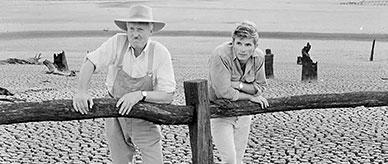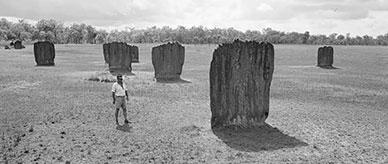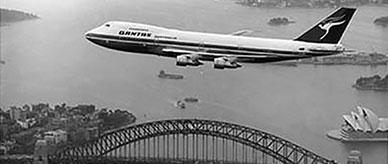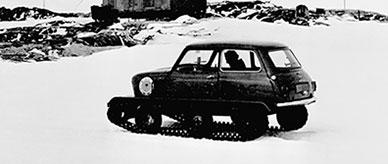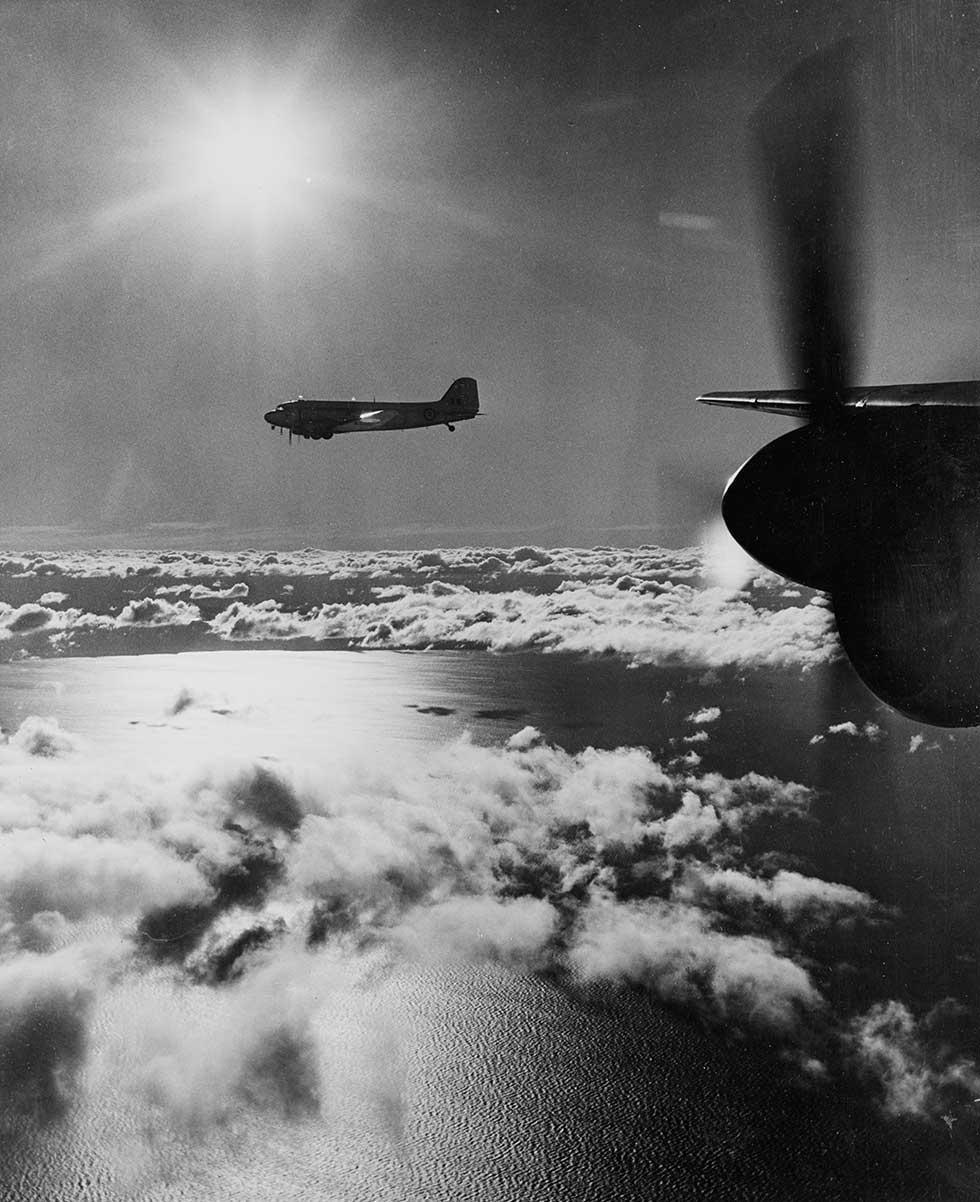


About this record
This is a black-and-white photograph of a cloud-seeding operation over the Pacific Ocean near Sydney. The photograph shows two Royal Australian Air Force (RAAF) DC-3 planes flying above some cumulus clouds. For one of the planes, only the nose and part of the propeller are visible, and the photograph appears to have been taken from this plane. Those on board the planes were probably conducting atmospheric testing prior to actual seeding.
Educational value
- Highlights cloud seeding as a means of manipulating weather to produce rain – cloud seeding involves planting a 'seed' of artificial ice, often in the form of tiny silver iodide crystals, into a cloud; the crystals gather moisture before freezing; they then fall from the cloud as hail or snow that usually reaches the ground as rain
- Shows an aspect of one of numerous cloud-seeding experiments that have taken place in Australia since 1947, including a six-year experiment that began in the Snowy Mountains in 2004, with silver iodide being sent into passing clouds from aerosol generators on the ground – despite all the experimental work conducted to help develop the technique, Tasmania is the only Australian state so far to use seeding on a significant scale
- Features a DC-3, one of the world's most successful passenger aircraft – fixed-wing, propeller-driven DC-3s revolutionised air transport in the 1930s and 1940s, and remained in widespread use into the 1970s, with the US company Douglas building more than 10,500; about 2,500 were also built under licence in the Soviet Union and Japan
- Features cumulus clouds, identifiable by their flat bases and puffy tops, making them resemble cauliflowers – cumulus clouds usually form when warm, moist air is forced upwards by strong currents and the water vapour condenses as it cools
- Shows an example of a scientific experiment by the Commonwealth Scientific and Industrial Research Organisation (CSIRO) – much of the work of the CSIRO has no immediate direct commercial benefit, but is conducted in the national interest, in this case to develop a technique for producing rain during periods of low rainfall
- Provides an example of a military asset being used to help achieve a non-military objective – in this case, RAAF DC-3 planes, probably from the RAAF's Richmond base in western Sydney, are being used; the CSIRO later acquired its own DC-3 for cloud-seeding experiments.
Acknowledgments
Learning resource text © Education Services Australia Limited and the National Archives of Australia 2010.
Related themes
Need help with your research?
Learn how to interpret primary sources, use our collection and more.

